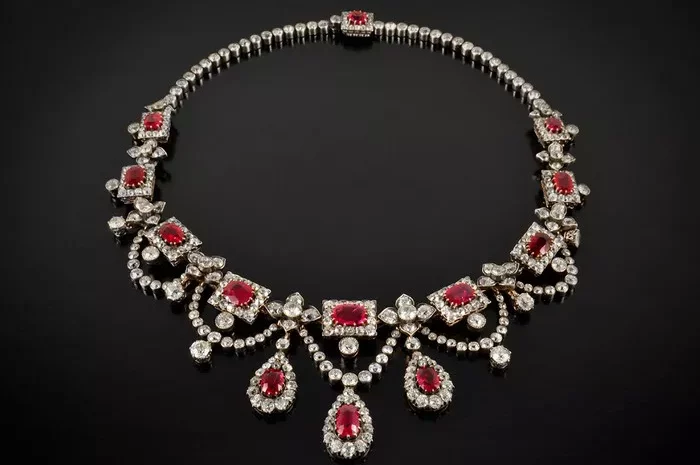Gemstones have captivated human fascination for centuries, with rubies standing as one of the most cherished and revered among them. With their vivid red hue and historical significance, rubies have adorned the crowns of kings and queens, symbolizing wealth, power, and passion. However, alongside natural rubies, synthetic counterparts have emerged, raising questions about their composition, authenticity, and ethical implications. This essay delves into the intricate world of synthetic rubies, exploring their composition, manufacturing processes, and the implications for the gemstone industry.
Composition of Synthetic Rubies
Synthetic rubies are crafted in laboratories, mimicking the natural processes that form their organic counterparts. The primary constituent of both natural and synthetic rubies is aluminum oxide (Al2O3), commonly known as corundum. However, it’s the presence of trace elements that lend rubies their distinctive red coloration. In natural rubies, this hue is predominantly due to the presence of chromium ions (Cr3+) within the crystal lattice structure of corundum.
In synthetic rubies, the same chemical composition is replicated, often using the Verneuil process, also known as flame fusion. This method involves melting powdered aluminum oxide with chromium oxide (Cr2O3) or other coloring agents to achieve the desired hue. The molten mixture is then slowly cooled, allowing crystallization to occur, resulting in synthetic ruby crystals. Additionally, other techniques such as the flux method and hydrothermal process are utilized to produce synthetic rubies with specific characteristics.
It’s crucial to note that while synthetic rubies replicate the chemical composition of natural rubies, they lack the geological processes and age that imbue natural gemstones with rarity and value. This fundamental difference underscores the distinction between natural and synthetic rubies within the gemstone market.
Manufacturing Processes of Synthetic Rubies
Several manufacturing processes are employed to create synthetic rubies, each with its unique methodology and applications:
Flame Fusion (Verneuil Process):
The Verneuil process, developed by French chemist Auguste Verneuil in the late 19th century, remains one of the most common methods for synthesizing rubies.
Fine powders of aluminum oxide and chromium oxide, along with any desired additives, are melted in a high-temperature flame.
The molten material is then dripped onto a rotating pedestal, where it gradually solidifies into a synthetic ruby crystal.
This process allows for the mass production of synthetic rubies, making them readily available for various industrial and commercial purposes.
Flux Growth Method:
In the flux growth method, a mixture of powdered chemicals, including aluminum oxide and chromium oxide, is dissolved in a molten flux.
The solution is then slowly cooled under controlled conditions, prompting synthetic ruby crystals to form within the flux.
This method enables the production of larger and higher-quality synthetic rubies compared to the Verneuil process, albeit at a slower rate and higher cost.
Hydrothermal Process:
The hydrothermal process involves placing a seed crystal of synthetic corundum in a high-pressure chamber filled with a solution of dissolved aluminum oxide and chromium oxide.
Under elevated temperature and pressure conditions, synthetic ruby crystals grow layer by layer around the seed crystal over an extended period.
While technically demanding and time-consuming, the hydrothermal process yields synthetic rubies with exceptional clarity and purity, suitable for precision optics and scientific applications.
Implications for the Gemstone Industry
The advent of synthetic rubies has had far-reaching implications for the gemstone industry, influencing market dynamics, consumer perceptions, and ethical considerations:
Market Dynamics:
Synthetic rubies offer a cost-effective alternative to natural gemstones, making ruby jewelry more accessible to a broader range of consumers.
The availability of synthetic rubies has impacted the pricing of natural rubies, particularly for commercial-grade stones, leading to a reevaluation of their market value.
Consumer Perceptions:
The growing prevalence of synthetic gemstones has prompted consumers to scrutinize the authenticity and provenance of their jewelry purchases more closely.
While some consumers value the uniqueness and natural beauty of authentic gemstones, others prioritize affordability and ethical considerations, leading to a shift in purchasing preferences.
Ethical Considerations:
The mining and extraction of natural gemstones, including rubies, often raise ethical concerns regarding labor practices, environmental impact, and social responsibility.
Synthetic rubies offer a more sustainable and ethically sound alternative, as they are produced in controlled laboratory settings without the associated environmental degradation or human rights issues.
However, ethical considerations extend beyond the production process to encompass transparency, disclosure, and consumer education regarding the distinction between natural and synthetic gemstones.
Conclusion
The synthesis of rubies in laboratory settings represents a remarkable feat of scientific ingenuity, allowing for the replication of nature’s beauty on a controlled scale. While synthetic rubies share the same chemical composition as their natural counterparts, they lack the geological history and intrinsic value associated with natural gemstones. As such, the distinction between natural and synthetic rubies is not merely a matter of composition but also encompasses market dynamics, consumer perceptions, and ethical considerations within the gemstone industry. By understanding the composition, manufacturing processes, and implications of synthetic rubies, stakeholders can make informed decisions regarding their use, sale, and valuation in a rapidly evolving marketplace.


